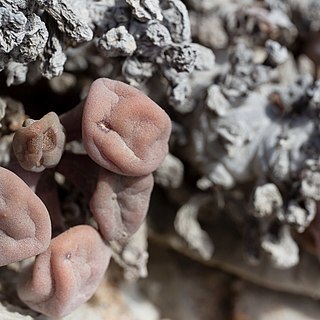A herb. The stems lie along the ground. It can grow each year from seeds or keep growing for a few years. The leaves are 6-15 mm long and 3-6 mm wide. They are narrowly oval. The flowers occur singly in the axils of leaves. The fruit is a capsule with a lid on top. This is 5.5 mm long. There are 13-20 seeds. The seeds are black and 1 mm long.
Herb, with only slightly woody stems at base, internodes with prominent papillae when young, branches up to 500 mm long. Leaves on 2-5 mm long petioles, blades elliptical, 7-20 x 3-10 mm, margins revolute. Flowers mostly sessile, rosy inside. Fruit 2-locular.

